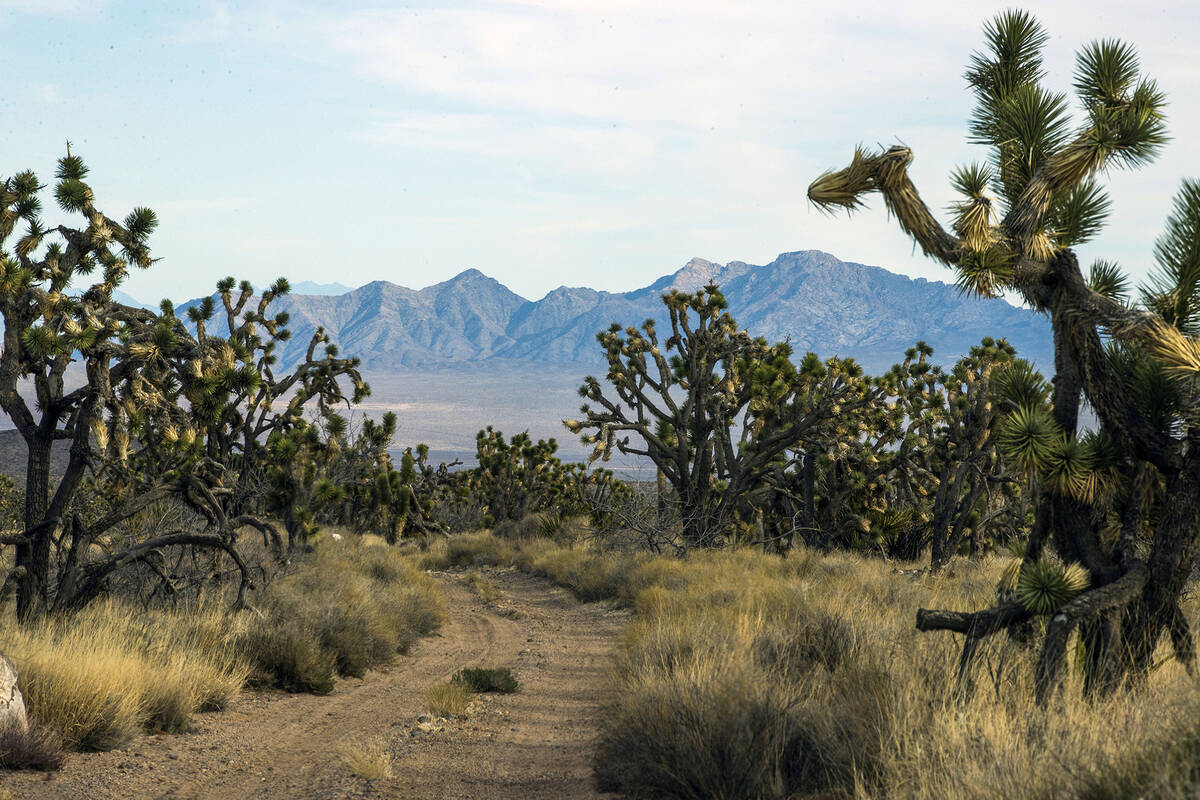More national monuments? Indigenous leaders call for land protections in the West
A Nevada Indigenous group and regional tribal leaders called for further protection of land ahead of the White House Tribal Nations Summit next week in Washington, D.C.
Indigenous Voices of Nevada hosted regional tribal leaders from California in a phone call Thursday to push for President Joe Biden to designate national monuments under the Antiquities Act. They are seeking two additional national monuments in California with the formation of the Chuckwalla National Monument and the Sáttítla, as well as an expansion of the San Gabriels National Monument.
Since the national monument designation of Avi Kwa Ame, Nevada Indigenous leaders have turned their attention to securing other land protections, including the Bahsahwahbee National Monument project in the Great Basin and the East Las Vegas National Monument project, which would protect the area of Frenchman Mountain and the Great Unconformity. They also are working to protect sacred sites in California.
“Rising tide raises all boats,” said Taylor Patterson, executive director of Indigenous Voices of Nevada.
The national monument designations in California will help both states’ economies and their green spaces, she said. Sacred land protection helps everyone. It helps the fight against climate change and uplifts tribal sovereignty, she said.
“When we look at land protection in California, it doesn’t just stop at the border of Nevada, and it doesn’t stop going the other direction, either,” Patterson said. “These lands are continuous, and the landscape is continuous.”
Chuckwalla National Monument
Located in Southern California, the Chuckwalla National Monument would cover approximately 660,000 acres south of Joshua Tree National Park and north of the Chocolate Mountains, and it would reach west from the Coachella Valley to east near the Colorado River, said Thomas Tortez Jr., chairman of the Torres Martinez Desert Cahuilla Indians.
The national monument would protect the cultural homelands for several tribal nations, including the Cahuilla, Chemehuevi, Mojave, Quechan, and Serrano nations, he said.
“Its cultural, natural and spiritual resources are essential to the welfare of regionally affiliated Indigenous peoples,” Tortez said.
It would also protect the big horned sheep and endangered desert tortoise who live there, as well as other desert plants and wildlife, he said. The trees, for instance, provide important stop-overs for birds migrating from Mexico through California, he said. The designation also would protect popular hiking trails, such as Painted Canyon, Box Canyon and Mecca Hills, Tortez said.
Sátíttla
The Pit River Nation, which lives in the four northeastern counties of California, also is working to establish a 200,000-acre national monument called Sátíttla, also known as the Medicine Lake Highlands.
The highlands play a central role in the Pit River people’s creation narrative and continue to be used today for ceremonies and gatherings, said Brandy McDaniels, the lead for the Sátíttla National Monument project for the Pit River Nation.
“Since the first twinkling of light, we have been one with this landscape,” McDaniels said. “In our way, one cannot even exist without the other and be complete and healthy and whole, mentally, physically and spiritually. The people and the land are one and the same.”
The area also includes Medicine Lake volcano, the largest volcano by volume in the Cascade Range that also serves as a natural hydrologic catchment system. It stores water and releases over 1 million acre feet of water annually, McDaniels said.
San Gabriel Mountains
The San Gabriel Mountains expansion would add 109,000 acres to the San Gabriel Mountains National Monument in Los Angeles County. President Barack Obama originally designated it as a national monument in 2014, protecting around 346,000 acres, according to Rudy Ortega Jr., president of the Fernandeño Tataviam Band of Mission Indians.
The mountains are a historical and cultural site for the descendants of the 26 Indigenous villages from the area, stories of which have been passed down from generation to generation, Ortega said.
Patterson and other Indigenous voices hope to see Biden protect those lands in the future.
“This is how we ensure that these landscapes, stories and rich cultural heritage are preserved for our future generations,” Patterson said. “Our ancestors have entrusted us with this responsibility. Now it’s our turn to carry it forward.”
Contact Jessica Hill at jehill@reviewjournal.com. Follow @jess_hillyeah on X.




















